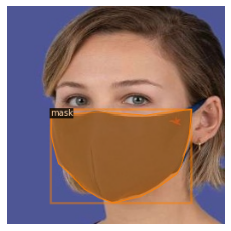A Deep Learning Framework to Reconstruct Face under Mask
While deep learning-based image reconstruction methods have shown significant success in removing objects from pictures, they have yet to achieve acceptable results for attributing consistency to gender, ethnicity, expression, and other characteristics like the topological structure of the face. The purpose of this work is to extract the mask region from a masked image and rebuild the area that has been detected. This problem is complex because (i) it is difficult to determine the gender of an image hidden behind a mask, which causes the network to become confused and reconstruct the male face as a female or vice versa; (ii) we may receive images from multiple angles, making it extremely difficult to maintain the actual shape, topological structure of the face and a natural image; and (iii) there are problems with various mask forms because, in some cases, the area of the mask cannot be anticipated precisely; certain parts of the mask remain on the face after completion. To solve this complex task, we split the problem into three phases: landmark detection, object detection for the targeted mask area, and inpainting the addressed mask region. To begin, to solve the first problem, we have used gender classification, which detects the actual gender behind a mask, then we detect the landmark of the masked facial image. Second, we identified the non-face item, i.e., the mask, and used the Mask R-CNN network to create the binary mask of the observed mask area. Thirdly, we developed an inpainting network that uses anticipated landmarks to create realistic images. To segment the mask, this article uses a mask R-CNN and offers a binary segmentation map for identifying the mask area. Additionally, we generated the image utilizing landmarks as structural guidance through a GAN-based network. The studies presented in this paper use the FFHQ and CelebA datasets.
PDF Abstract


 CelebA
CelebA
 FFHQ
FFHQ